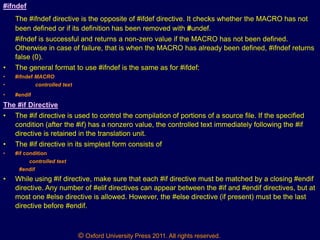The document summarizes preprocessor directives in C programming. It discusses that the preprocessor processes source code before compilation by operating on preprocessor directives starting with #. Common directives include #define for macros, #include to insert external code, and conditional directives like #ifdef and #ifndef to conditionally compile code. It provides details on macro types, operators, pragma directives, and uses of various preprocessor directives.
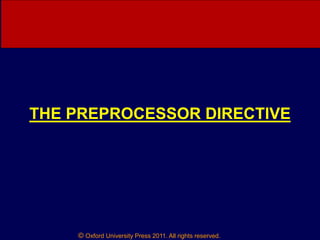
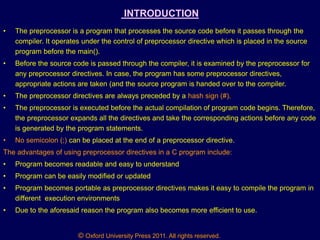
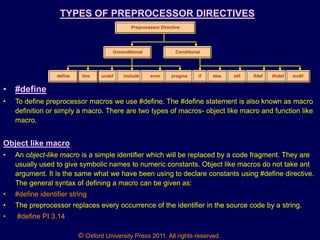
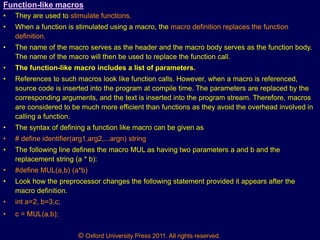
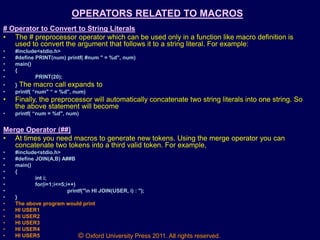
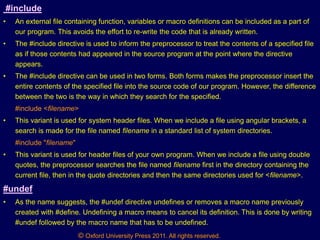
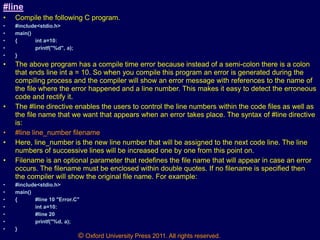
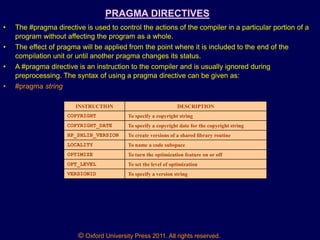
![© Oxford University Press 2011. All rights reserved.
CONDITIONAL DIRECTIVES
• A conditional directive is used instruct the preprocessor to select whether or not to include a
chunk of code in the final token stream passed to the compiler. The preprocessor conditional
directives can test arithmetic expressions, or whether a name is defined as a macro, etc.
• Conditional preprocessor directives can be used in the following situations:
• A program may need to use different code depending on the machine or operating system it is
to run on.
• The conditional preprocessor directive is very useful when you want to compile the same
source file into two different programs. While one program might make frequent time-
consuming consistency checks on its intermediate data, or print the values of those data for
debugging, the other program, on the other hand can avoid such checks.
• The conditional preprocessor directives can be used to exclude code from the program whose
condition is always false but is needed to keep it as a sort of comment for future reference.
#ifdef
• #ifdef is the simplest sort of conditional preprocessor directive and is used to check for the
existence of macro definitions. Its syntax can be given as:
• #ifdef MACRO
• controlled text
• #endif
• #ifdef MAX
• int STACK[MAX];
• #endif](https://image.slidesharecdn.com/chapter10-230225070829-8e1d62db/85/PreProcessorDirective-ppt-9-320.jpg)
